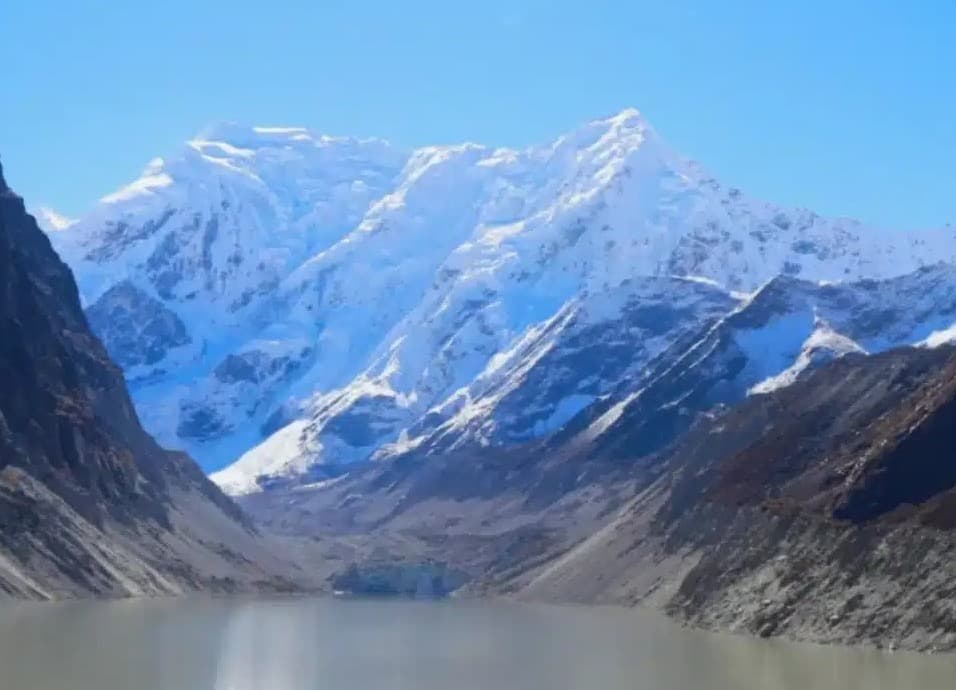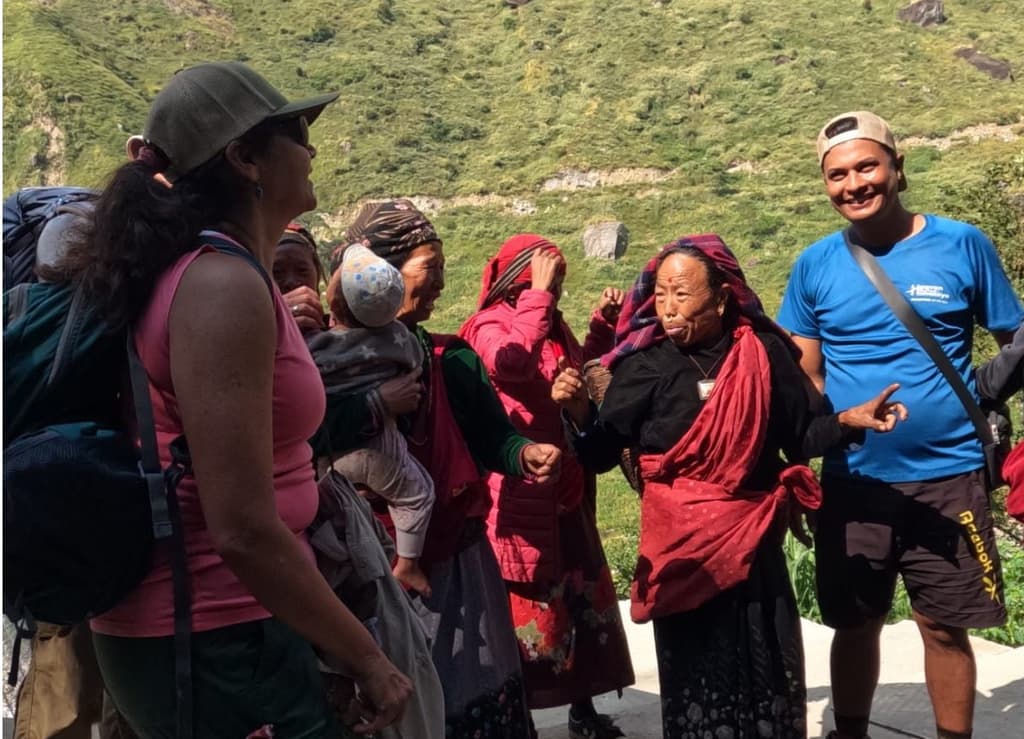When travelers dream of alpine landscapes, Switzerland usually comes first to mind. Snow-dusted peaks, pristine lakes, wooden chalets, and the romantic sound of cowbells echoing across lush meadows—it’s an image that’s graced postcards and travel brochures for decades. But while Switzerland is undeniably beautiful, it is also one of the most expensive destinations in the world. A few nights in Zurich or Zermatt can easily cost what an entire two-week holiday in Nepal might.
What if you could enjoy equally breathtaking mountains, alpine meadows, charming villages, and authentic cultural immersion—at a fraction of the cost? That’s where Nepal comes in. Nestled in the Himalayas, this small yet incredibly diverse country is not only home to the tallest peaks on earth but also offers one of the richest cultural and travel experiences you can find. And unlike Switzerland, it won’t drain your wallet.
For anyone seeking alpine adventures, Nepal is the affordable—and some would argue even more rewarding—alternative to Switzerland.
Mountains That Outshine the Alps
Let’s start with the main attraction: the mountains. Switzerland’s Alps are world-famous, with iconic peaks like the Matterhorn drawing climbers and photographers alike. But Nepal takes alpine grandeur to another level entirely.
The Himalayas tower over the Alps—literally. While Mont Blanc, the highest peak in the Alps, stands at 4,809 meters, Nepal’s Everest soars to 8,848 meters. And it’s not just Everest; eight of the world’s ten highest mountains lie within Nepal’s borders. Annapurna, Dhaulagiri, Kanchenjunga—the names alone inspire awe in mountaineers.
For trekkers and mountain lovers, the trails of Nepal offer unmatched drama: sweeping glaciers, alpine lakes of surreal turquoise, high passes with views that make you stop mid-step, and rugged peaks that pierce the sky. In Switzerland, you might find yourself sharing trails with luxury hikers and pricey gondolas. In Nepal, you share paths with yaks, prayer flags fluttering in the wind, and fellow adventurers from every corner of the globe.
The Cost Divide – Switzerland vs. Nepal
Here’s where the contrast becomes crystal clear. Switzerland is one of the most expensive countries on earth, while Nepal is one of the most affordable.
Accommodation
- Switzerland: A modest 3-star hotel in Zurich or Interlaken easily costs USD 150–200 per night. A mountain lodge in Zermatt or St. Moritz? Expect USD 300–600 per night for mid-range, and upwards of USD 1,000 for luxury. Even budget hostels often hover around USD 50–70 a night.
- Nepal: In Kathmandu or Pokhara, a comfortable guesthouse or boutique hotel ranges from USD 35–50 per night. Along trekking routes, tea houses (mountain lodges) charge as little as USD 5–10 per night for a clean bed and basic comfort. Even higher-end hotels in Nepal rarely exceed USD 150 per night.
Food and Drink
- Switzerland: Dining out is notoriously pricey. A simple plate of rösti or fondue for one can cost USD 30–50, while a full dinner with wine easily climbs to USD 80–120 per person. Even a cappuccino often costs USD 6–8.
- Nepal: A hearty meal of dal bhat (lentils, rice, vegetables, and curry) costs USD 2–5. A plate of momos (dumplings) is about USD 1–2. Even in tourist hubs, a sit-down dinner rarely exceeds USD 10–15. Coffee lovers can indulge for USD 1–3 a cup.
Transportation
- Switzerland: The Swiss rail system is famous, but it comes at a price. A single train ride from Zurich to Interlaken is around USD 50–70, while a scenic journey like the Glacier Express can cost USD 150–250 one way. Gondolas to mountain viewpoints often cost another USD 50–100 per ride.
- Nepal: Domestic flights are affordable, with Kathmandu to Pokhara priced around USD 50–100. Buses and jeeps are far cheaper at USD 5–15 for regional travel. Within cities, taxis or ride-shares are only a few dollars. And unlike the Alps, many of Nepal’s most iconic views are free—you reach them on your own two feet.
Trekking and Activities
- Switzerland: Guided treks, ski passes, and mountain tours add up quickly. A 5-day guided alpine hike might cost USD 1,500–2,000, excluding accommodation. Ski passes average USD 80–120 per day.
- Nepal: Trekking permits for iconic routes (like Annapurna or Everest Base Camp) cost USD 20–50, and guided treks with accommodation and food included average USD 25–40 per day. Even multi-week expeditions cost less than a long weekend in Switzerland.
Bottom line? Two weeks in Switzerland can easily cost USD 5,000–8,000 per person. In Nepal, a month-long trekking and cultural adventure can be done comfortably for USD 1,500–2,000.
Culture Beyond the Alps
Switzerland’s alpine charm lies in its villages with wooden chalets, cowbells, and cheese-making traditions. It’s picturesque, yes—but also somewhat polished and uniform. Nepal offers a cultural depth that transforms your mountain journey into something more meaningful.
The streets of Kathmandu and Bhaktapur overflow with history: intricate wooden carvings, vibrant courtyards, and centuries-old temples. Monasteries in the Himalayas are alive with chanting monks, prayer wheels spinning, and colorful flags carrying blessings on the wind. In mountain villages, you’ll encounter Sherpa, Gurung, and Tamang communities, each with distinct traditions, dress, and hospitality.
Every trek becomes more than a hike—it’s a cultural immersion. You’re not just crossing landscapes, you’re stepping into lives. Tea house owners tell stories by the fire, children run to greet passing trekkers, and you might find yourself sharing a cup of butter tea with a lama in a remote monastery. This sense of human connection, woven into the majesty of the Himalayas, is something Switzerland can’t replicate.
Diversity of Landscapes
Both Switzerland and Nepal offer alpine meadows, forests, and mountain passes—but Nepal takes diversity to another level.
In just a single trek, you can journey from subtropical valleys filled with banana trees and rice paddies to alpine forests of rhododendrons and pine, and finally to barren, snow-dusted high-altitude deserts. The Annapurna Circuit is famous for this: starting at lush greenery and ending in windswept Tibetan plateaus, it’s like traveling through different worlds in the span of a few days.
Switzerland is stunning, yes—but its landscapes are more uniform. You won’t find centuries-old terraced fields clinging to Himalayan slopes, nor Buddhist prayer wheels turning at 4,000 meters. In Nepal, the contrasts make every day feel new, every step a discovery.
Adventure for Everyone
One of the myths about Nepal is that it’s only for hardcore mountaineers. The truth is, Nepal offers experiences for every traveler, from beginner trekkers to seasoned climbers.
- Easy treks like Ghorepani Poon Hill offer jaw-dropping sunrise views over the Annapurnas after just a few days of walking.
- Moderate adventures like the Everest Base Camp trek let you walk in the footsteps of legends without technical climbing skills.
- Serious expeditions are, of course, available for those who dream of summiting 6,000–8,000-meter peaks.
In Switzerland, activities often feel gated by cost—skiing, paragliding, even hiking lodges can be prohibitively expensive. In Nepal, the adventure is accessible to anyone with curiosity, stamina, and a love of mountains.
A Haven for Budget Travelers
In Switzerland, luxury overshadows affordability. A cup of coffee might cost more than a meal in Nepal. While Switzerland caters to a premium market, Nepal embraces travelers of all backgrounds.
Backpackers can live comfortably on USD 20–30 per day, while mid-range travelers enjoy boutique hotels, guided treks, and multi-course meals at USD 50–80 per day. Even luxury seekers find exceptional value: think heritage hotels in Kathmandu or mountain-view lodges in Pokhara that would rival Swiss chalets at one-third of the price.
The Verdict

Switzerland will always be beautiful, no doubt. Its Alps have an undeniable postcard charm. But if you’re seeking true alpine majesty, cultural immersion, and a destination that won’t break the bank, Nepal is the smarter choice. The Himalayas don’t just rival the Alps—they redefine them.
In Nepal, every step of the journey feels like discovery: landscapes that shift with altitude, people who welcome you like family, and costs that make long adventures possible. Switzerland may have the luxury, but Nepal has the soul—and at a fraction of the price.
So next time you dream of alpine peaks, don’t look west to the Swiss Alps. Look east, to the Himalayas of Nepal—where adventure, culture, and affordability converge in the ultimate alpine haven.











